16 Marketing Trends for 2016

After a strong 2015, the boating industry should feel confident about its businesses in the coming year. That confidence will hopefully inspire dealers and manufacturers alike to take calculated risks to attract more customers and grow sales. We’ve gathered 16 different marketing trends for marine businesses to be aware of in 2016 that will help maximize profits.
Mobile is king
If there is one thing you do in 2016, it should be to step up your mobile game. Customers will use it to find local businesses, look up websites when they see billboard ads, research boat brands and more.
At Marine Connection, almost 50 percent of customers were coming to the website from tablets alone, and the company website needed to reflect this traffic.
“We really had to work on designs and optimize everything from the links people click or the way they view images to satisfy our customers [and] not give them a reason to leave the site and go somewhere else,” said Jani Gyllenberg, founder at Distinct Marketing and former marketing director at Marine Connection. “[Having a] mobile website is no question. If you don’t have one, you are losing business.”
Similarly, Evan Davis, head of marketing at OneWater Marine Holdings, said its dealerships are seeing nearly 60 percent of web traffic coming from mobile. The company is working on rebuilding its entire web platform to create consistent, mobile-responsive sites for all of its dealerships.
The importance of a mobile website isn’t just convenience: In April, Google announced they would begin to knock websites in search rankings that did not have a mobile-friendly platform. So having a mobile website is an important SEO strategy.
Target mobile users
Because such a significant portion of consumers are using mobile devices for their research, it’s important to make sure any targeted advertising is consumable for the mobile user. OneWater Marine has optimized all of its Boat Trader listings to be cross-platform for mobile users, and its most successful paid advertisements on Facebook have been mobile optimized.
“We don’t ignore the desktop ads by any means – we run those as well – but we make sure that when we do run those ads, we’re really focused on the mobile version,” said Davis.
OneWater Marine has also partnered with Pandora Internet Radio for its advertising. The company places the bulk of its ads on Pandora through the service’s mobile platform, as 85 percent of Pandora traffic comes from mobile. What makes Pandora so unique is its direct response capabilities.
“Somebody who hears the ad can actually click directly from the ad through to our landing pages, and so we make sure that when they do that, they’re coming to a mobile-friendly website,” Davis said. “We’re really trying to make sure we’ve got that user in mind from not only the time they first experience the ad … but also as they click through and come down the stream.”
Conversion rate optimization
Google reported a 29 percent increase from April 2014 to April 2015 in mobile conversion rates. The customers are there, and smart marketers in 2016 will be tracking their conversion rate optimization to better understand what is and isn’t working.
For a marine business, this is a bit more challenging as our industry isn’t selling a “click and buy” product. However, that doesn’t mean it isn’t worth putting in the time and effort to track.
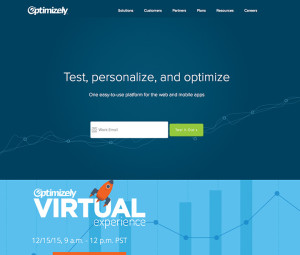
“There’s a lot of technologies out there, especially for tracking SEM [search engine marketing] ads, to really see what’s working for you instead of just spending money recklessly and hoping for results,” said Gyllenberg.
If your website sells products that are “click and buy” items, such as pro shop gear or maintenance necessities, it is important to be sure your website can support moving customers. Can a customer add something to their cart on a mobile device and easily move to a tablet or desktop to finish the purchase? These are capabilities customers will be looking for in 2016.
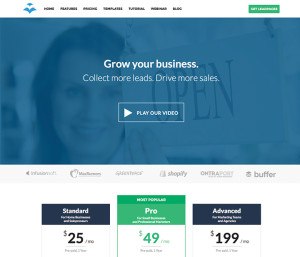
Aaron Weiche, chief marketing officer at GetFiveStars.com, said businesses should be sure they have the right tools to understand exactly what a customer is doing when they come to a website to accurately track CRO. CrazyEgg puts an emapping layer over a webpage to see where users are clicking and interacting, and sites like Optimizely and Lead Pages are designed to help marketers best capture those leads by going through test scenarios to ultimately improve your CRO rates with customers on the website.
“No excuse” not to use video
If mobile is the king of marketing in 2016, video is queen. Marketing professionals all agree that video should be integral to a business’s marketing plan as video consumption on mobile continues to skyrocket in terms of engagement.
The Online Publishers Association reports that 80 percent of Internet users recall watching a video ad on a website they visited within the past 30 days. Of that 80 percent, 26 percent looked for more information online, 22 percent visited the website named in the ad, 15 percent visited the company, and 12 percent purchased the specific product featured in the video ad.
“There’s no longer any excuse for dealers not to incorporate video into their marketing,” said Jim Rhodes, president of Rhodes Communications. “There are tools readily available for dealers to create their own video content without breaking the budget. Even easier, they can simply repurpose video content from their manufacturers.”
Use reviews as a marketing tool
A cultural shift has occurred in the U.S. as it relates to what type of information consumers will trust. Online reviews reign supreme with today’s buyers because they want to hear from other like-minded consumers who have purchased similar products and gone through similar decision-making processes.
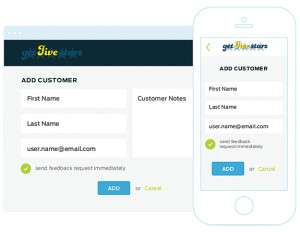
Weiche says there are three things to do if you are going to begin asking customers for reviews: have a process, have a platform and have the right people. Using a platform like GetFiveStars.com offers a series of templates for businesses to enter a customer’s email address and the system will garner reviews from customers. Happy customers are encouraged to post positive reviews online and unhappy campers are asked for more feedback so the staff is able to follow up with anything they can do to help the unsatisfied customer.
“Somebody has to be such a huge brand advocate to pick the time to leave you a review,” said Weiche. “If you make it easy for them and lead them along … you’re making their life a lot easier than if you require them to think up the process all on their own.”
Make marketing easier
Marketing is incredibly difficult and time-consuming for the average marine business. Finding the right automation tools can help save time and drive sales. Distinct Marketing offers a dealer management system that allows a dealer to upload a new boat with images, and within five minutes the listing is on eBay, Boat Trader, the dealer website and more. The system allows dealers to save time, especially when it comes to moving data back and forth between systems.
“The majority of dealers are using one system for doing service, maybe another for printing out sales agreements, [etc.],” said Gyllenberg. “What our DMS does is it takes all these tasks and much more, and just combines them into a seamless and very easy experience.”
However, it’s important to ensure any automation is implemented in a smart way. Singleton Marine, a OneWater Marine dealership, integrated Lightspeed into its dealerships and has adjusted the automation rule several times based on what the company has learned over the past year.
“For as much as I love automation and I think there’s incredible value there in that it can enhance the customer experience and can accelerate the customer through the buying cycle, the systems and processes have to be designed and set up properly for it to be done well and effectively,” Davis said. “Or else it can be a nuisance and a detraction from the process.”
Use CRMs to nurture non-intrusively
 Customer relationship management (CRM) tools help with follow-up activity and other automated communications. This is particularly useful in a dealership when a lead isn’t ready to buy immediately. The prospect is put into an automated follow-up campaign to nurture them as they are mulling over the decision. These messages can be provided on a timed sequence and aimed directly at the customer’s relevant needs to help move them through the buying cycle in a non-intrusive way.
Customer relationship management (CRM) tools help with follow-up activity and other automated communications. This is particularly useful in a dealership when a lead isn’t ready to buy immediately. The prospect is put into an automated follow-up campaign to nurture them as they are mulling over the decision. These messages can be provided on a timed sequence and aimed directly at the customer’s relevant needs to help move them through the buying cycle in a non-intrusive way.
“But again, they have to be smart enough,” said Davis. “The system has to be able to account for the different types of people. And then the system has to be smart enough so that when that customer does reengage after the third message out of 12, that they get pulled out of that campaign [and] don’t continue to get bombarded with those other messages.”
Pay-per-click works – if you do it right
Pay-per-click advertising will continue to be a strong marketing medium in 2016. PPC can help a business understand the cost of a marketing decision and if it is seeing a positive return – only if it is done right.
“That really comes down to [whether or not] you have everything integrated where you can fully track from that user’s intent and their clicks through your site, purchase and everything else,” said Weiche. “You really get a ton of insight and data, and really a complete history of what that customer’s experience was and what they did on your site, and what it netted you.”
Weiche recommends leaving the granular nuances of PPC advertising to a professional who understands how to track analytics for PPC ads.
Distinct allows dealers to target specific customers with digital ads through a form of subliminal messaging. For example, if a customer purchases a boat from you, when that customer hits their annual service you can target that customer with an ad. Automotive dealers have seen success with this in their service departments, as the algorithms are able to calculate a customer’s mile averages and set alerts for 30 days before that service needs to take place.
Focus on the content, not the algorithm
It’s impossible to keep up with search algorithms anymore. The second businesses learn how to game Google’s system, Google has already changed it again. To optimize your search engine rankings, focus on what you can control – the content. To get organic results, have the content customers are looking for: boat information, specifications, upfront pricing, etc.
Search engines “are trying to weed through the fake or the other guys who are trying to get up there using less favorable tactics, and they’re just trying to bring real content that customers are searching for to them,” said Gyllenberg. “If Google is trying to bring the real content to the customers and you have the real content, then it’s just common sense that you’ll rank well.”
No spam on social media
When email became a protocol for the average person, what followed? Spam. Most consumers started blocking email addresses if they were getting spammed with content they didn’t care about. Gyllenberg is seeing a similar trend in social media marketing now and consumers are reacting the same way they did to email.
“Companies are so eager to jump on the social media bandwagon that anything that gets a like or a view or a share, they’re willing to post, and I think going into the future customers are going to be filtering out much more of that,” said Gyllenberg. “Giving the customer something they can only get from your [business] … things that make you different, that’s what’s important.”
Blending of traditional and digital
With all this talk about digital marketing mediums, does this mean 2016 is the year traditional marketing becomes irrelevant? Not so fast. As digital marketing becomes such a huge piece of a business’s strategy, the line between digital and traditional marketing is fuzzier than ever.
For instance, consumers who are searching for boats on a mobile device often don’t want to spend the time filling out a web form, but they will call a dealership right away.
“If we were watching just email leads, you would think that the mobile stuff isn’t working, but if you actually look at the phone calls, you see we do generate a lot more phone calls than we do email leads from those mobile customers,” said Davis.
Direct mail and boat shows remain huge
Another traditional medium that will remain prominent in 2016 is direct mail, as long as it is done strategically and targets specific consumers.
Davis said he still uses jumbo postcard campaigns in his dealerships and relies on the registered boat owner list. With that list, he can target competitive owners who may be interested in a new model his dealership is selling, or customers who may want to trade up and have used brands Davis wants to sell.
For boating especially, one traditional medium that remains incredibly relevant is boat shows. Dealers spend the most money on shows because they see the largest return on investment.
“Boat shows allow the customers to have that personal experience with your salesman and your dealership, even if it’s not at your dealership,” said Gyllenberg. “That’s something you just can’t expect the Internet is going to replace.”
 This is why Distinct released its digital displays in 2015, which allow dealers to show off photos, videos and other marketing collateral. They also allow dealers to capture leads on-site at the show through giveaways and other opportunities for the customer to input their information. (These displays were chosen as a Top Product of 2015, which you can read more about in our May 2015 issue.)
This is why Distinct released its digital displays in 2015, which allow dealers to show off photos, videos and other marketing collateral. They also allow dealers to capture leads on-site at the show through giveaways and other opportunities for the customer to input their information. (These displays were chosen as a Top Product of 2015, which you can read more about in our May 2015 issue.)
Relationship marketing
One of a business’s strongest marketing tools in 2016 will be its own people. Marketing the relationship you can offer is what differentiates you from a competitor.
“Boats are boats. That sounds kind of crass and almost dismisses product, and I don’t mean for it to sound quite so generic, but what we do fosters relationships on the water, whether that’s between the customer and their family and friends or between us and our customers,” said Davis. “We want to maintain that relationship with our customer – that is our goal.”
Davis has seen this in action with one of OneWater Marine’s dealerships, Rambo Marine. When Rambo Marine began selling Malibu after 28 years of being a MasterCraft dealer, customers didn’t find the next MasterCraft dealership – they called Rambo and asked what Malibu the dealership recommended they buy.
Events build relationships
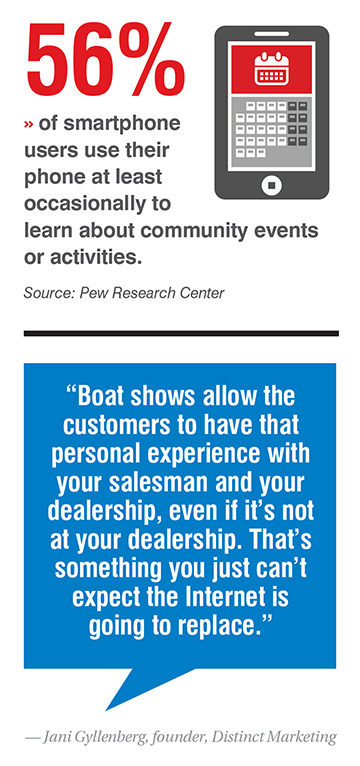 Because relationship building is still such a strong tool for marine businesses, getting customers in the door should be a priority in 2016. Events that show appreciation for existing customers and give prospects an opportunity to become familiar with the lifestyle are highly successful.
Because relationship building is still such a strong tool for marine businesses, getting customers in the door should be a priority in 2016. Events that show appreciation for existing customers and give prospects an opportunity to become familiar with the lifestyle are highly successful.
Singleton Marine hosts a fall foliage cruise every year where customer are invited to participate in a boat parade, check out the changing leaves and go back to the dealership for a catered meal. Prospects are able to ride in customers’ boats or ride with sales reps in a demo boat.
“It’s really a chance for us to extend those relationships and those relationships beget relationships, and so the more that we can get those relationships extended out into the community, and the deeper we can forge those relationships, we’ll continue the cycle of repurchases,” said Davis.
Tracking your marketing
Whatever you do for your marketing strategy in 2016, make sure you are tracking it.
Using unique phone numbers remains a strong tool for tracking a lead’s source if you are a retailer. Distinct’s DMS allows dealers to use different phone numbers on eBay, Craigslist, specific landing pages on websites and more to help better track where leads are coming from, the average call duration from each phone number location and more, which is technology being used in the automotive industry today.
Google Analytics is vital for any business running a digital marketing campaign. However, marketers need to look beyond the high-level visitors and click rates. A successful business in 2016 will look at where those consumers are coming from, when they visited a site and will be able to answer the question “how many customers achieved an outcome we wanted?”
“The likely higher professionals make sure all of the tracking is set up accordingly, set up things like goals and event tracking and different pieces so you can understand specific moments or specific actions that happen on your website,” said Weiche.
Hire the right people
With any task, you want to hire the best person for the job. If it’s possible to hire additional staff, be sure anyone you hire to do marketing for the business knows what they’re talking about.
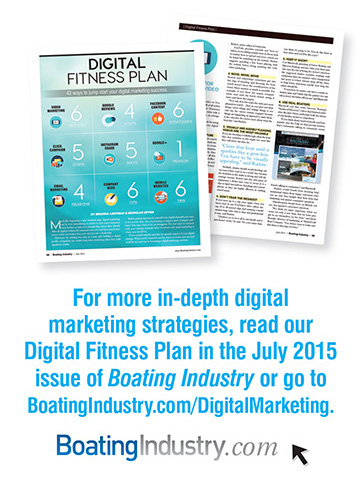 “Marketing, in general, is every which way you communicate with a customer,” Gyllenberg said. “All it comes down to is the quality of employees that you have doing [marketing]. They are 100 percent representing your company and if you have someone that’s doing a poor job, it just portrays your company poorly.”
“Marketing, in general, is every which way you communicate with a customer,” Gyllenberg said. “All it comes down to is the quality of employees that you have doing [marketing]. They are 100 percent representing your company and if you have someone that’s doing a poor job, it just portrays your company poorly.”
This is especially important when it comes to content marketing. According to Davis, content marketing is valuable only if a business has the resources to do it, and the biggest resource is personnel.
“You can write stuff to write stuff, and if it’s not the right stuff, it’s not going to mean anything. Just having content isn’t effective – you’ve got to have the right content and it’s got to be good, quality content,” said Davis. “I’m not saying it can’t work – you just have to have the right people who can focus on certain niche areas and develop good, quality content for those areas that are relevant to the audience to attract the right people.”




